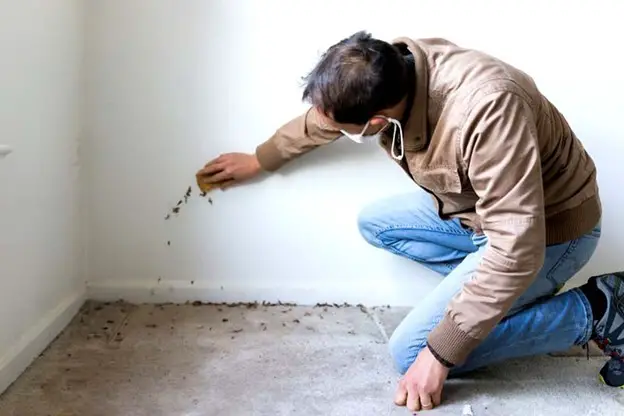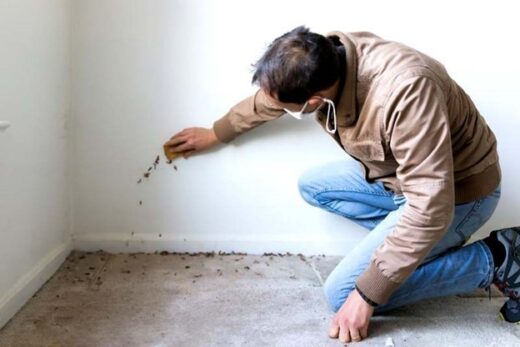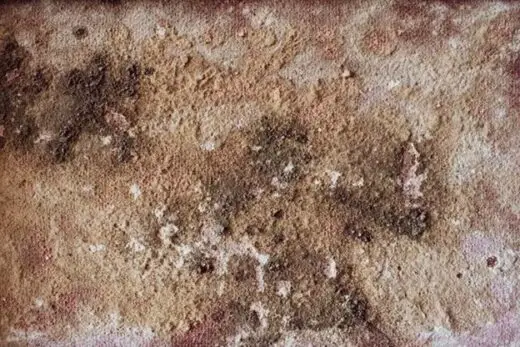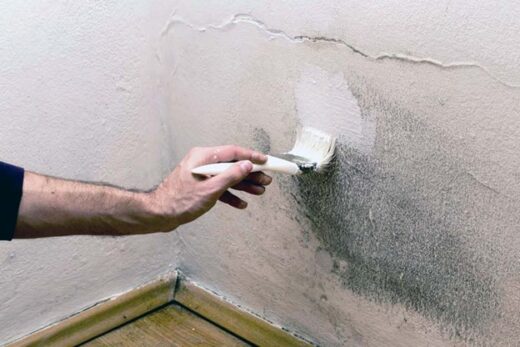Will mold die if dried out tips, Home flower mound advice, Spores growth, House moisture, Property maintenance guide
Will Mold Die if Dried Out?: Debunked or Confirmed
post updated 16 February 2024
A lack of moisture is often enough to kill most organisms. The question is, does it also apply to mold?
No, mold does not die when it is dried out. It only becomes inactive. And so as soon as it gets access to moisture, it becomes active and resumes growing.
Below is everything you need to know or you can go straight to the source website.
1 October 2022
Will a lack of moisture kill mold?
No, a lack of moisture will not kill mold.
When mold spores lack moisture, they simply become inactive. They do not die. This means that when they eventually get access to moisture, they will resume growing and will wreak havoc in your home.
One thing that you should keep in mind is that the amount of moisture that is needed to activate dried-out mold doesn’t have to be a lot. An increase in indoor humidity or a few water splashes is often enough to sustain mold growth. Therefore, removing the mold is the surest way of ensuring that your home is safe.
Is dry mold dangerous?
Yes, it can be dangerous for people who have severe respiratory complications and those with highly compromised immune systems. It can also trigger adverse reactions in people with mold allergies.
Why?
Because contrary to common belief, dry mold can still release dry mold spores into the air. And so for people who tend to be severely affected by mold, dry mold is just as dangerous as active mold.
Will dry mold continue to grow?
No, dry mold will not continue to grow.
So what happens to mold when it dries?
When mold dries, it becomes dormant
Mold needs both moisture and food in order to grow.
Without moisture, the spores dry out and become dormant. The mold becomes temporarily inactive. And the inactive mold will stay dormant and will only resume growing once it gets access to moisture.
But it doesn’t die
But does the mold die without moisture? No, mold doesn’t die without moisture.
And fixing the underlying moisture problem is not enough
However, just because there isn’t moisture around the house doesn’t guarantee that the mold will become instantly dormant. This is because of two main things.
- Mold has a good moisture retention capacity. Therefore, under the right circumstances, it can go for a while without a moisture supply.
- The surfaces on which mold grows absorb moisture. And so depending on the organic materials and their location, it may take time for the materials to dry out. Therefore, the mold will still have access to moisture even after leaks and other sources of moisture have been fixed.
Therefore, it is always a good idea to kill and remove the mold right after fixing the underlying moisture problem. You may also have to remove any water-damaged materials from your home in order to guarantee a safe environment for your loved ones.
How do mold spores get into your home?
Mold spores get into your home through your door, your ventilation system, your windows, or any other opening that lets in air into your home.
Since airborne spores exist freely in the environment, they also land on people, objects, vehicles, and other materials and surfaces that are outside. They can thereafter be released inside a home.
Can you completely get rid of mold spores from your home?
No, you can’t get rid of mold spores completely in your home.
This is because they exist freely in the environment – both inside the home and outside. And so for as long as you have air getting in and out of your home, you will always have mold spores in your home.
However, you can reduce their concentration by killing mold and then removing it. You may also discourage mold growth by getting rid of any contaminated materials and reducing humidity in your home. For this you need to contact a restoration company.
How do you know if you have an active mold problem?
You know that you have a mold problem if you notice any of the following signs.
Smell
During the early stages, it may not be visible. However, you can still detect it via smell.
If you detect a musty and earthy smell in your home, chances are that you are dealing with a mold infestation.
Stains
You can use the naked eye to detect mold. This is because it often creates ugly patches. These patches can be black, white, gray, brown, or green.
Stains in damp and hidden areas
And so if you notice such patches in your home, mold growth is the likely cause. This is especially if the stains are in hidden or damp areas.
Do a bleach test
To confirm that the stains are actually caused by mold growth, you will need to conduct a bleach test.
To do so, simply dip cotton in diluted bleach and then apply it to the affected area. If the stains brighten up and turn white, then you are dealing with mold-caused stains. But if they don’t, then it is likely just dirt.
Allergies
If you start noticing that you or your loved ones are experiencing allergic reactions, especially if there is no other reasonable explanation, chances are that you are dealing with a mold problem. This is because molds produce allergens that can make your loved ones sick.
Some of the health problems it can cause include:
- A runny nose
- Nasal congestion
- Headaches
- Sore throat
- Itchy eyes
- Coughing
- Difficulty breathing and other respiratory problems
- Skin rashes and other common symptoms of skin irritation
- Breathing difficulties
Is it necessary to remove mold?
Yes, mold removal is necessary.
Here are the reasons why you should remove mold.
- To remove stains. Mold stains walls, furniture, carpets, floors, and other fixtures around the home. The best way to get rid of these stains, and to restore their look, is to simply remove the mold.
- Health concerns. As long as there is mold in a home, the mold will always disseminate spores into the home. This is bound to cause respiratory illness, itching, and other allergy-related symptoms.
Mold removal is thus an effective method of preventing any mold-related uncomfortable symptoms. In a way, it can be part of a disease control strategy.
- To improve air quality. High concentrations of mold spores in a home lead to poor indoor air quality.
It increases the number of impurities in the air. It also makes it stuffy. And so if you want to improve the quality of air inside your home, removing mold should be an obvious first step.
- To prevent property damage. When it grows on walls, carpets, clothing, tiles, and other surfaces, it causes ugly marks and stains. This is often enough to damage the item or surface.
- To keep mold from coming back. Mold spores can remain dormant for a long period. And as soon as they get access to moisture, they will resume growing.
There is no need of risking a mold comeback. Removing mold, even if it is dormant, is always recommended as a foolproof way of preventing future mold infestations.
How do you prevent mold growth?
You keep mold at bay by eliminating conditions in which mold thrives.
This essentially involves taking away the two things that mold needs in order to thrive in a home: moisture and food (cellulose material).
Here are the most effective ways of preventing the growth of mold in your home.
Fix leaks
An easy way of preventing a mold infestation is to fix the most common cause of mold problems: leaks. When you fix all the moisture leaks in your home, you eliminate moisture that mold typically depends on to grow.
Therefore, the first thing that you should do once you notice mold in your home should be to inspect your home’s roof, siding, walls, and indoor plumbing for holes, cracks, and gaps. And if you find any, you should seal them immediately.
Reduce humidity
You can keep the relative humidity in your home within the recommended range (humidity levels of between 35% and 50%) by investing in a humidifier.
Humidifiers are great at sucking excess moisture out of the air. They do this by condensing any moisture in the air that passes through it, and by doing so, help to give mold zero chance of thriving inside your home.
Improve air circulation
You improve air circulation in your home by:
- Opening windows and doors. This is so especially in areas like the basements, bathrooms, and kitchens.
- Reducing overcrowding. The more crowded items are in a room, the less likely it is for air to move freely. This then leads to stuffiness. It also increases the likelihood of moisture condensing on surfaces inside the room.
- Installing a fan. A good fan will increase air circulation, not only within your home, but also between the home and the outside environment. This will go a long way towards reducing the odds of high moisture concentration in indoor air.
- Enhancing ventilation in select areas. Areas like shower areas, laundry rooms, and kitchen areas are prone to having high levels of humidity. This is thanks to the activities that go on in these areas — cooking, cleaning, and washing.
By ensuring proper ventilation – like by letting exhaust fans run when in use– in these rooms, any vapor that is released into the air will be allowed to escape more easily. This will then help to ensure that the humidity level in your home remains within the recommended range.
- Improve management of wet or damp items. You should avoid storing wet clothes, rags, carpets, and other damp items inside your home. Any wet items should be aired outside. And any that have already been subject to mold contamination should be discarded.
- Install an air conditioner. A good air conditioner will improve your home’s air quality by reducing the concentration of spores in the air. It will also do more than just blow cold air into your home. In addition to cooling warm air, it will also remove moisture from the air by condensing it – typically, warm air absorbs more moisture than cold air.
Therefore, installing a good air conditioner is a great way of keeping mold, and its negative effects, at bay.
Will mold die if dried out FAQ
What does mold need in order to grow?
Mold requires moisture and food(any organic material) in order to grow.
So what happens when either of these is not available? The mold simply assumes a dormant state and it remains inactive until it gains access to both organic material and moisture.
Are dry mold spores harmful?
Yes, dry mold spores are harmful.
Even after mold spores dry out, they can still trigger allergic reactions. They can even cause mold poisoning. Both of these things make these dry spores to be as dangerous as those that aren’t dried out.
Will painting over mold kill it?
No, painting over mold will not kill it.
It will only hide it. And for as long as you don’t eliminate mold and remove it, it will keep on growing.
With time, it will end up discoloring the paint. The mold can also cause premature peeling and cracking.
Use this free tool to find a good mold remediation expert near you
If you find mold growing in your home, asking for a professional’s help is the best way to ensure that you completely get rid of it.
HomeGardenGuides.com is a website that can help you to get the best expert for the job. Using the website, you can get 3 estimates fast by real certified experts in your area in just 2 minutes.
Here is how it works.
- You scroll to the top of the page and enter your Zip code.
- Answer questions about your mold remediation needs
- Your details will be forwarded to three local experts.
- You will then receive a price estimate for the job and some friendly advice.
IMPORTANT: There is no obligation to hire. This is a free tool and service to be used at your pleasure.
Comments on this guide to Will mold die if dried out : Debunked or Confirmed article are welcome.
Mold
Mold Posts
To Protect Your Home From Mold And Mildew
How to keep your house free from mold
5 common types of mold in homes
How to eliminate mold and crawl space problems
Building Articles
Comments / photos for the Will mold die if dried out guide page welcome.









